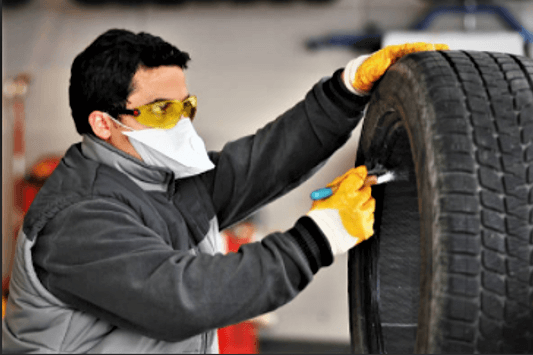Getting a tire fixed to get safely to one’s destination before meeting a professional to fix it, as might be the case, hasn’t been easier, thanks to rubber cement.
Likewise, being a cost-effective method, it’ll save you on a rainy day when you can’t afford a professional and can’t do with your car sitting helplessly in the garage.
The rubber cement can be applied to patches or rubber plugs, as the case might be. So, this guide will guide you on the right measure to use, whether a patch or a plug.
Table of Contents
What Is the Function of Rubber Cement in Tire Repair?
Rubber Cement is known for its lubrication properties and the ability to make for a better seal for vulcanizing.
Right Working Condition for Use of Rubber Cement
It’s best to work with rubber cement in a well-ventilated environment because it is hazardous when sniffed for a while, which may result in severe damage to the kidneys, lungs, and brain.
And due to its highly flammable nature resulting from ingredients such as trichloroethane, heptane, and acetone, you should try and keep away from any flame to avoid fire.
After using your rubber cement, it’s best to apply grease or Vaseline to the nozzle since they are better air sealants to prevent rubber cement from self-curing. At the same time, new rubber cement should be kept in tight, dry, and good conditions, mainly as prescribed by the manufacturer.
What To Do To Easily Follow Any Guide?
The first step is to get your Tire Repair toolkit ready. And this toolkit can be easily purchased from a physical or online store as may be convenient for you. For the most part, these are some of the components in most repair toolkits, they are:
- Reamer
- Patch/Rubber plug strip
- Needle nose plug
- Self-vulcanized plug
Should I Get Another Tire, Or Is It Still Repairable?
The picture above is self-explanatory on a repairable tire or one that should be replaced outright.
Repairable Areas in a tire are areas spanning across the threaded parts of the tire. While Unrepairable parts are an area of the side wall close to the rim, once you notice such a part is punctured or torn, you’re better off procuring another tire.
Another essential factor to consider is what repair part would be practical once it falls in the repairable area, as explained above.
When the cause of the puncture is a nail, screw, or any sharp object that bores a hole and this hole is narrow, then you should make use of a plug. But when the hole is large, a patch would be more effective and in cases where you have an irregular spot, think of tackling the issue by patching.
Meanwhile, patches work well only if the puncture is less than a quarter-inch in diameter and there’s no other patch close to the punch or tear.
Why Do You Let Rubber Cement Dry?
Keeping rubber cement in a solvent solution allows it to be easily spread on a patch or rubber plugs and used as an adhesive. Once dried, rubber cement evaporates and makes for a better seal, as the rubber parts left behind after evaporating are an excellent bonding material.
How Long Would A Rubber Cement Takes To Dry?
Rubber Cement would take at most 3 minutes to dry in sunny and dry weather. However, any conditions other than this, one should make sure to make the place well-ventilated to speed up the drying time and to keep one safe from the hazardous nature.
How Long Will Rubber Cement Last?
Many users have affirmed that rubber cement in tire repairs is effective and doesn’t affect tire lifespan.
We believe there are various specifications for different tires specified by the manufacturer. To be clear, I’ll advise you to stick to the manufacturer’s advice, but we can’t be sure you install the tire correctly. You can take tires to professionals so they can run a check to see if things like wheel balancing and alignment are in the right and perfect condition.

